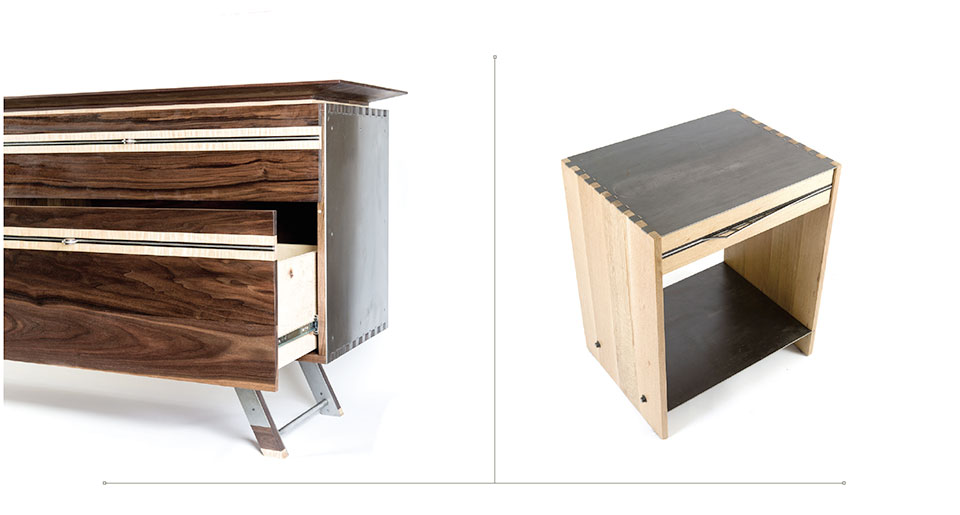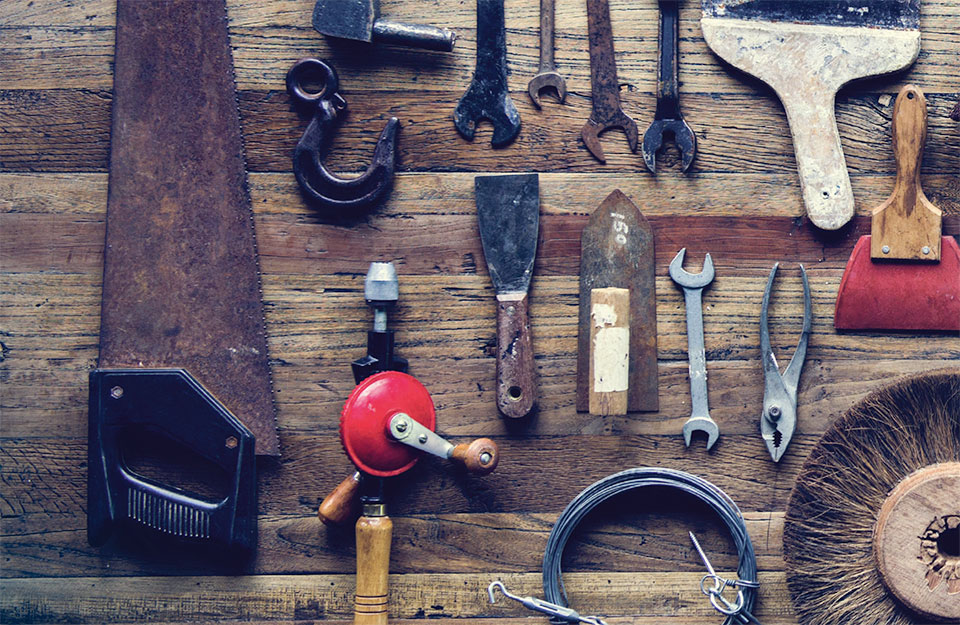Working With Wood In The Modern West
Wood is one of the oldest building materials in human history. From the first huts and human tools to contemporary design’s most prized creations, wood, as a material, is at the center. The appeal of timber products, in all their potential variations, endures today. A well-crafted wood piece lends timeless warmth and beauty to the heart of a home. From structural elements to fine furnishings to artisan details, Western Home Journal spotlights how expert local craftsmen create with a medium that continues to take on new and relevant forms in our modern lives.
The Wood Man Floors
All Hands on Deck
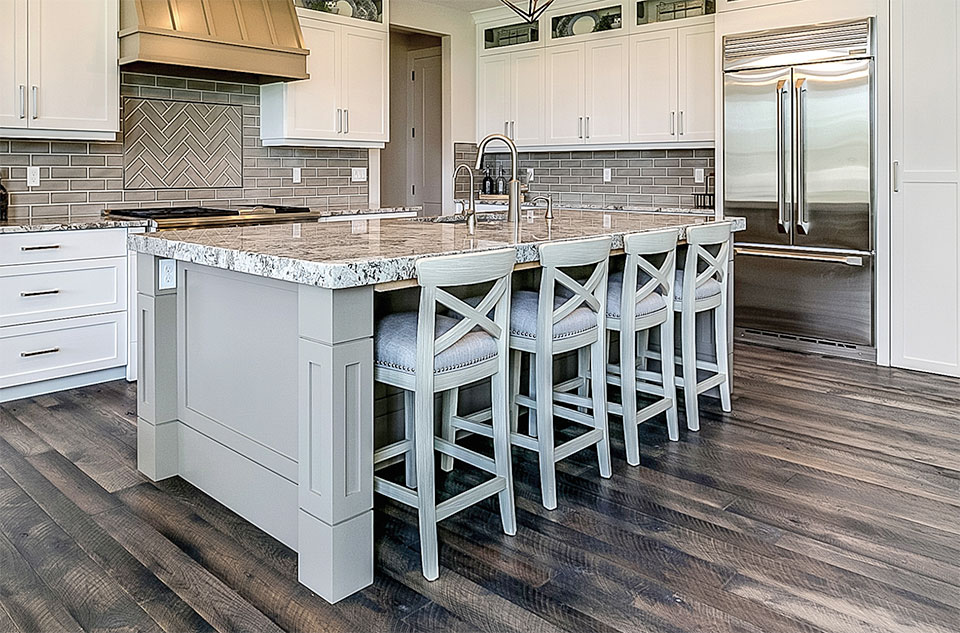
“My brother and I were installing floors for 15 years already and it was very frustrating for us…to not be in control of the final outcome.”
–Kyle Larson, The Wood Man Floor
Did you know that the Copenhagen Airport is the largest Nordic airport, with 30 million passengers passing through it in 2018? It’s one of the oldest airports in Europe—and it has wood floors.
An oil-finished floor, if properly maintained, is a lifetime floor. The Danish airport is recognized internationally for its design. Endless travelers’ photos reference the elegant floors, and even with 50,000 daily visitors, the natural glow and color have not faded.
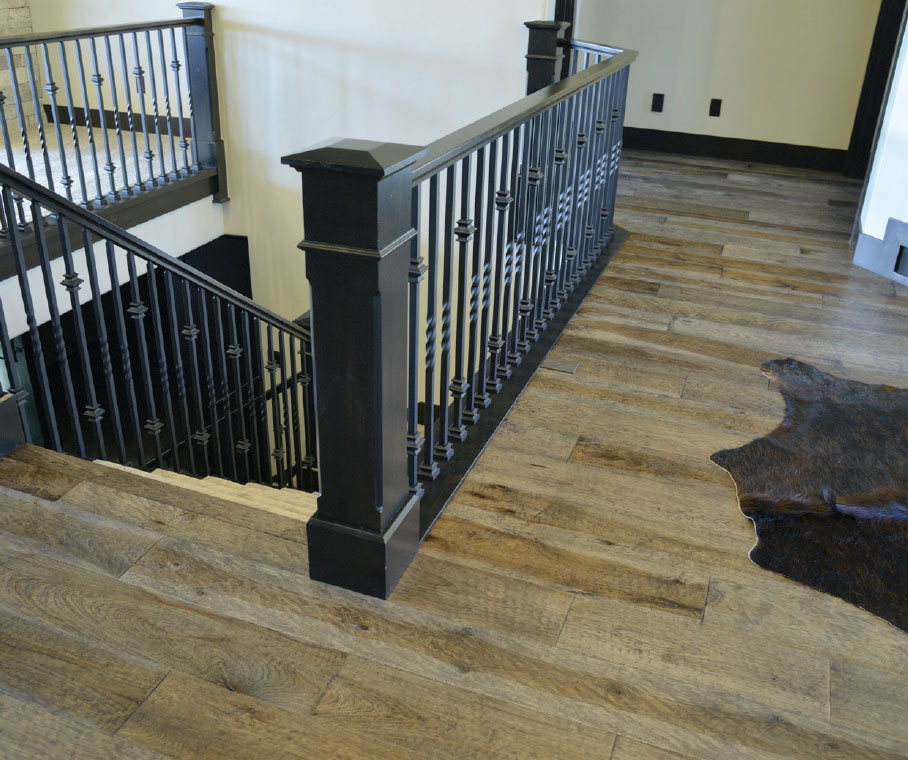
When Kyle Larson, brother Josh, even their mother, Karen, who had been in the flooring industry for years, discovered the Danish WOCA product, there was an innate impulse to create a company where that kind of quality would be available locally in Utah and throughout the Rockies. But there was already a business idea brewing even before that—one that would eventually be called The Wood Man Floors.
In the wood flooring business, there are a number of options for prefinished kits coming from China. Unfortunately, the sets are not all related. Meaning that the staining doesn’t match from trim to plank. The Larsons recognized a need for a quality wood flooring product, one that handled the entire installation process in a unified and consistent way.
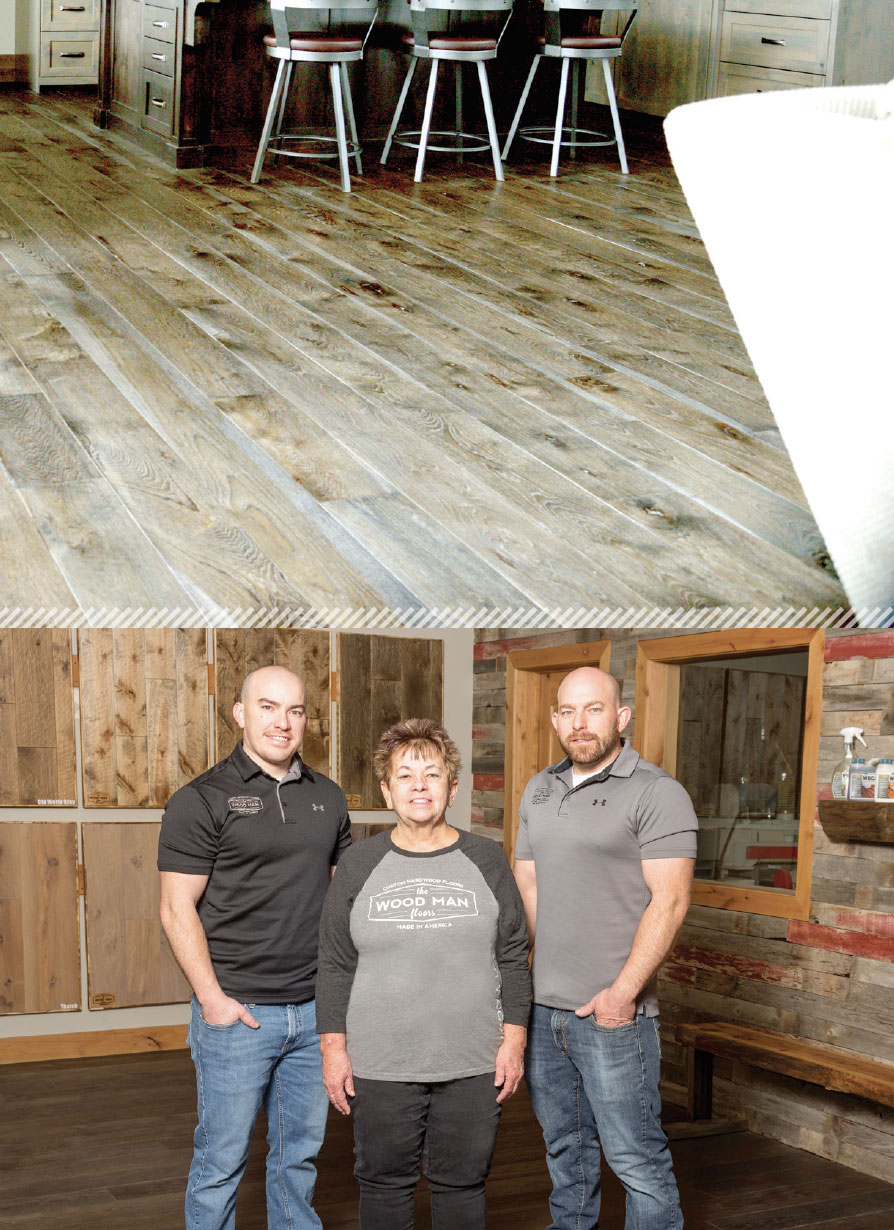
As Kyle explains, “My brother and I were installing floors for 15 years already and it was very frustrating for us and disappointing for the homeowners too, to not be in control of the final outcome. About that time, we caught wind of this oil finish because of the low VOC ratings. We convinced our mother to go with us into business.”
In their line of work, finishes have been left out of the kit manufacturing process from other companies. Nothing is made together—not color, not nose pieces, not trim or texture. But The Wood Man Floors makes sure there is no reason to be frustrated or for a homeowner to be unhappy with their floor. Their priority is providing a level of quality with such a personal touch that the hand scraping may not only be a detail but a metaphor for the business as well as the time and thought that goes into each piece of wood.
Hand-scraped floors not only offer a warm sense of a rustic feel with an authentic look. The uneven surface also makes it much more sympathetic to the regular wear and tear of family routine or an active lifestyle. Dogs, kids, or skateboards cannot really do much damage to the crannies. The grooves offer shadows and geometry with an appearance of light. Each piece seems to pay proper homage to the living tree it came from and even better, the process makes it easier to keep clean.
All of The Wood Man Floors’ lumber is sourced from one mill in Ohio, an Amish mill of high integrity. The Wood Man Floors sources oak, hickory, walnut, and other hard woods from Sheoga. Once the type of wood is chosen, the family begins helping designers, builders, and their clients find exactly what they want. How much texture and how much color, or any other features are determined by the project. It’s a custom job every time.
“When it comes in, we texture or smooth with the wire brush. We receive the dry wood in plank form, texturize it, then stain it with mostly water-based stains, and then use the WOCA oil finish,” explains Larson. The stain options are endless as the Larsons are able to control so many of the variables.
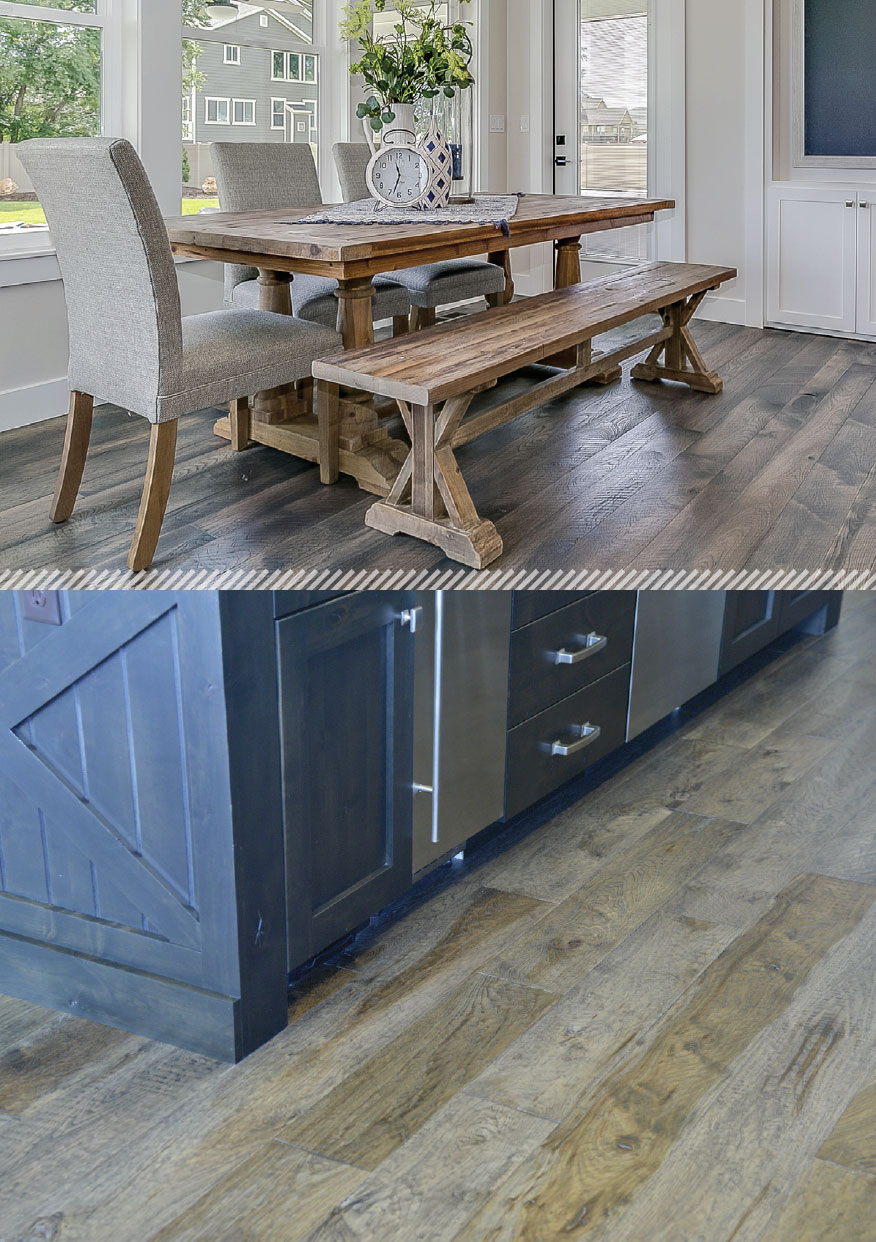
“When it comes in, we texture or smooth with the wire brush. We receive the dry wood in plank form, texturize it, then stain it with mostly water-based stains, and then use the WOCA oil finish.”
–Kyle Larson, The Wood Man Floor
With only the three of them, the Larson family business has been booming. According to Kyle Larson, they didn’t realize the need they were actually filling. “We thought our space was going to be too big. We didn’t realize how fast we would grow, either. We almost tripled our projections in the first year,” he says.
From their 800-square-foot showroom within their 10,000-square-foot facility, they do everything in-house. There’s even a window into the production area so clients can see first-hand the hand-scraping process as they browse color and variety options. Larson feels that it’s really a unique opportunity to be able to pick every aspect of your floor, and says, “You don’t really get to do that, create the floor you want.” It’s quite literally a hands-on experience.
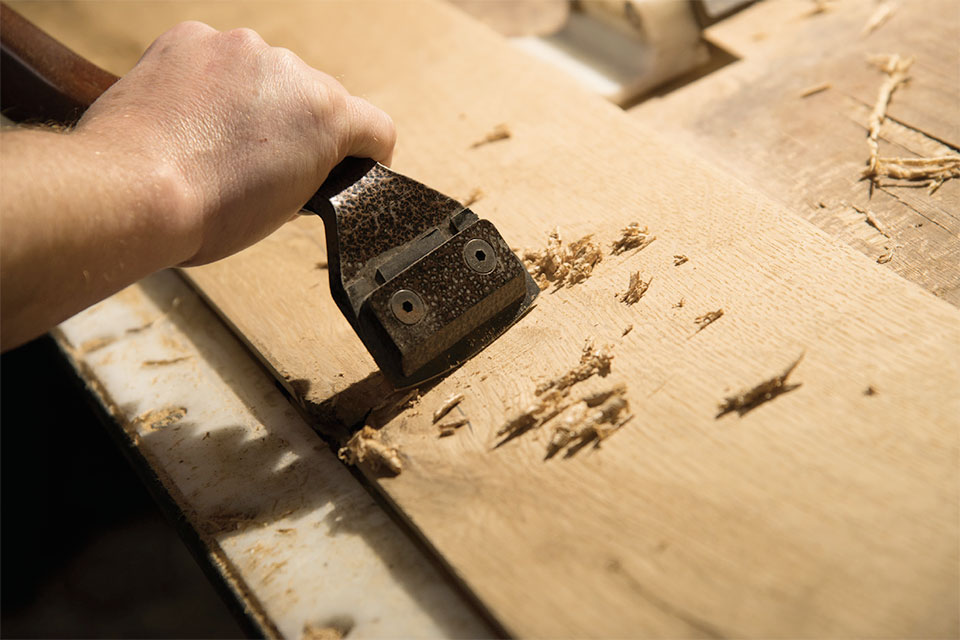
The WOCA product ensures a green, all-natural foundation for your home or commercial space. Hardwood floors will dent and scratch, but with a UV oil finish, the floor can look almost new in no time. The finish is made of 100% solids and contains no solvents or after-cure products. There is no post-installation off-gassing of any kind.
Unlike with conventional UV-cured urethane finishes, repairs are much easier with an all-natural finish. With a conventional product, if the finish is broken, it is virtually impossible to touch up seamlessly, and requires sanding and recoating of the whole floor. The WOCA product is an easy repair, a simple wiping of touch-up oil on a cloth, rubbing it into the wood, and letting it dry for one hour.
Once a stain and wood type selection has been made, it takes about four to six weeks to manufacture the product on site. The Wood Man Floors showroom is open Monday through Friday and Saturdays by appointment.
Walsworth Furnishings
Playing with Balance
“I VIEW THE NATURAL INTEGRITY OF THE WOOD AS MOST IMPORTANT, AND TRY TO DO WHAT I CAN WITH
THE FINISH WHILE NOT TAKING AWAY FROM THE WOOD’S INNATE BEAUTY.”
––Wes Walsworth, Walsworth Furnishings
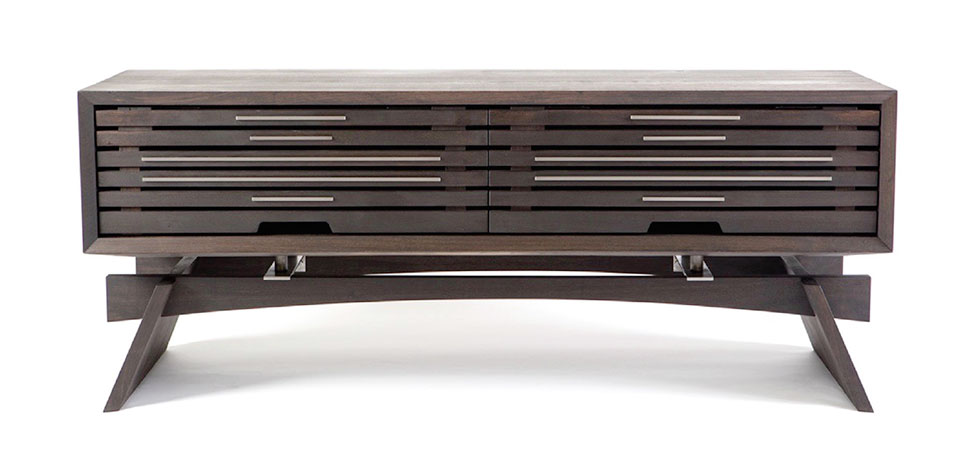
The path Wes Walsworth takes to his downtown Ketchum woodworking shop, adjacent to his home, is short in physical distance but long in experience. It winds through a careerin music and his years spent working at vineyards inAustralia. Each of these pieces of his past seems to haveinformed the next, eventually leading the Sun Valley native to boomerang back to Idaho in order to refine his craft.
Wes’ roots are in music. He recorded and toured professionally for years, and crafted acoustic guitars for Taylor Guitars in California for a time. But it was a pile of retiredwine barrels on a vineyard where he worked in Australia that ultimately sparked his career in furniture making. He recalls his first interaction with those forgotten barrels, “Seeing the purple pigment left inside and their distressed exterior, as well as the curve of the wood, was what started it for me.”


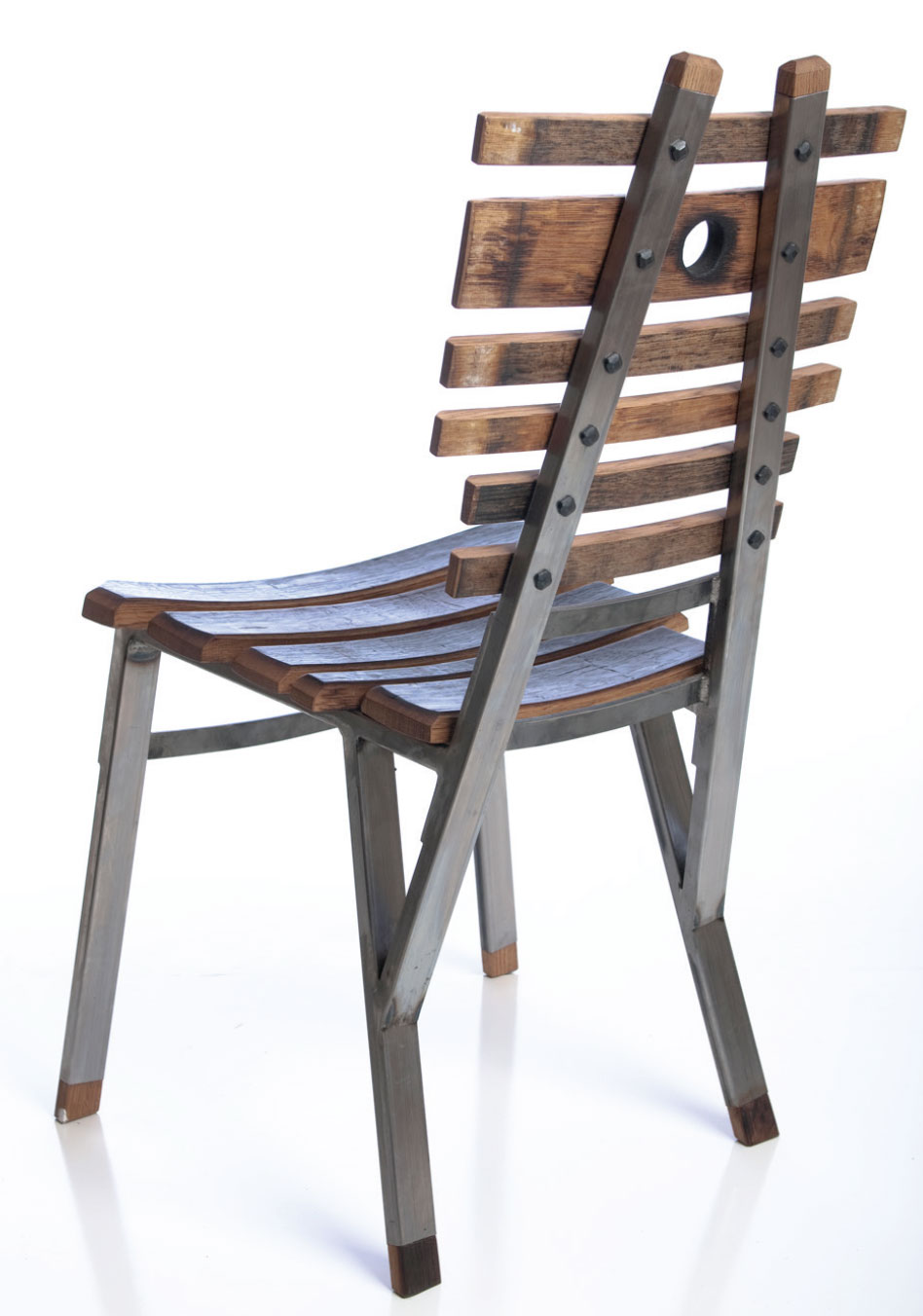
When Wes moved back stateside in 2010, he brought the woodworking skills he gained at both Taylor Guitars and from his father, a Sun Valley custom home builder by trade, and also drew inspiration from the patina and curve of those barrels he found in Australia. From there, Wes began creating rustic modern furniture, with the natural lines of spent barrels lending grace and ergonomic contour that belie the rustic character of the material.
The current trend of Walsworth Furnishings’ work moves the needle from rustic reclaimed wood to fine hardwoods, but Wes still holds a deep appreciation for the previous life that each piece of reclaimed wood brings to his shop. A stack of wine barrel pieces sits in his curing shed, and he is friendly enough with each of them to guess at the varietal they might have held in their previous life based solely upon their stain of red or the aroma they release when cut.
In many of Walsworth’s current pieces, the interplay between wood and steel defines his style. “I like the contrast between the two materials,” Wes says. “Putting polished steel up against rustic wood, or vice versa, really amplifies the beauty of both.” He plays with new techniques like steel and wood joinery, and creates sculptural forms like his cut steel drawer pulls that are still functional to the furniture piece. Scattered around his workshop are the components of an expandable reclaimed oak and ash dining table with lines that evoke mid-century styling while still retaining a mountain character through his choice of materials, and finishes that include steel edging and leg brackets.
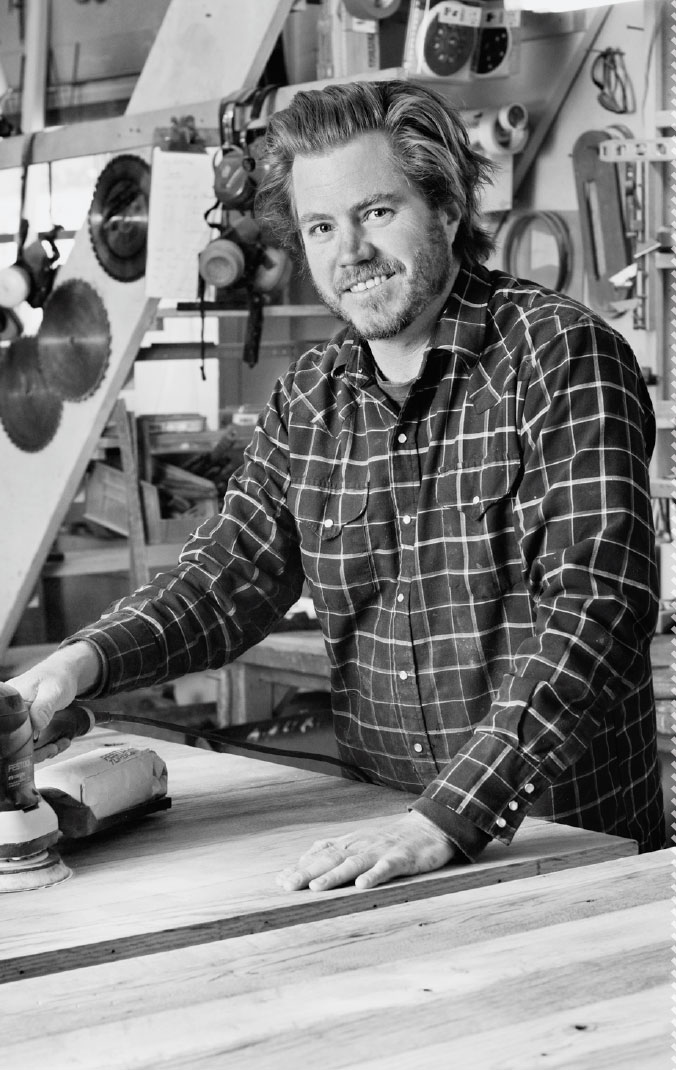
The workshop is as much a laboratory asa space dedicated to creation. Wes uses it to experiment with the patina of steel, and with wood finishes like a combination of wool and vinegar, which reacts with tannins in the wood to blacken oak and walnut. While these trials push his design forward, he ultimately strives to find a balance between the finish and preservation of a wood’s natural character. “I view the natural integrity of the wood as most important, and try to do what I can with the finish while not taking away from the wood’s innate beauty.”
Wes strikes a similar balance in his design concepts, which continue to move where his artistic vision takes him, while always remaining somehow versed in a mountain aesthetic. This is perhaps because, though he sells his work nationwide online, putting Walsworth furniture in almost every state of the union, he still views the custom work he does for the Sun Valley area as central to his business.
